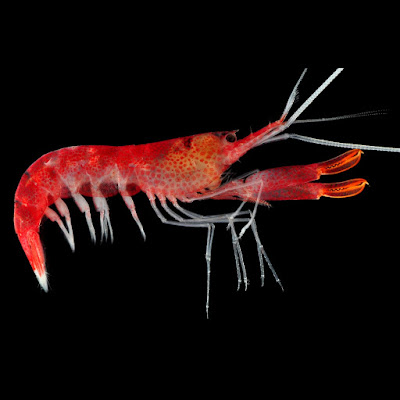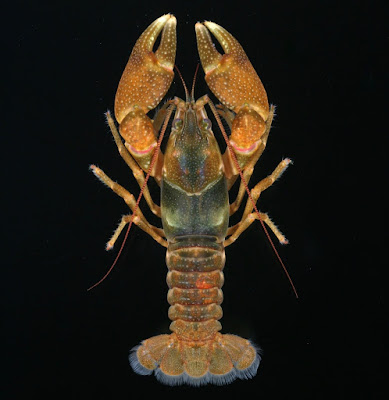[Most Recent Entries] [Calendar View]
Friday, July 26th, 2019
| Time | Event | ||||
| 1:16a | [Crustacea • 2019] The Alpheid Shrimp Genus Nennalpheus Banner & Banner, 1981 (Malacostraca: Decapoda: Caridea) in the Tropical eastern Atlantic, with Description of A New Species from Gabon and New Records of N. sibogae (De Man, 1910) in the Indo-West Pa
Abstract The alpheid shrimp Nennalpheus Banner & Banner, 1981, hitherto known only from a few records in the tropical western Pacific, is recorded for the first time from the tropical eastern Atlantic, as well as from the Indian Ocean. Nennalpheus gabonensis sp. nov. is described based on a single but complete male specimen collected in mediocre visibility conditions at 11 m depth on a rocky reef north of Libreville, Gabon. The new species presents a substantial number of morphological differences from the two other species of Nennalpheus, especially in the armature of the cheliped fingers. The previously known distribution range of Nennalpheus sibogae (De Man, 1910), the type species of the genus, is extended significantly to include the Central Pacific (Hawaiian Archipelago) and the Indian Ocean (Glorioso Islands in the Scattered Islands group, and Mayotte Island in the Comoro Archipelago). In addition, new illustrations of N. sibogae are provided, including the previously not figured mouthparts and high-quality, contrasting background colour photographs. Field observations indicate that Nennalpheus is able to produce a weak snapping sound by rapidly closing one or both chelipeds, a previously suspected, but never observed behaviour. Keywords: Crustacea, Alpheidae, Nennalpheus, caridean shrimp, new species, new records, Atlantic Ocean, Central Pacific, Indian Ocean, coral reef, tooth-fossa system, snapping Nennalpheus sibogae (De Man, 1910) Arthur Anker. 2019. The Alpheid Shrimp Genus Nennalpheus Banner & Banner, 1981 in the Tropical eastern Atlantic, with Description of A New Species from Gabon and New Records of N. sibogae (De Man, 1910) in the Indo-West Pacific (Malacostraca: Decapoda: Caridea). Zootaxa. 4646(1); 87–100. DOI: 10.11646/zootaxa.4646.1.5 | ||||
| 2:06a | [Crustacea • 2019] Faxonius bellator • Systematics and Description of A New Species of Faxonius Ortmann, 1905 (Decapoda: Astacidea: Cambaridae) from the Red River System of Kentucky and Tennessee
Abstract Faxonius barrenensis (Rhoades, 1944) is endemic to the Green River system of Kentucky and Tennessee, USA and closely related to Faxonius mirus (Ortmann, 1931), which is restricted to Tennessee River tributaries in Tennessee and Alabama. A crayfish with morphological affinities to these species (Faxonius sp.) occurs in the Red River system (Cumberland River Drainage) of Kentucky and Tennessee. Whether the latter represents a disjunct population of F. barrenensis, F. mirus, or a distinct species, has not been tested. Whether the shared morphological traits reflect shared ancestry or convergence is unknown. We used molecular and morphological data, including two mitochondrial (COI and 16S) and two nuclear (28S and GAPDH) genes and a standard suite of phenotypic measurements to examine the phylogenetic relationships and the taxonomic status of Faxonius sp., relative to F. barrenensis, F. mirus, and other species of Faxonius Ortmann, 1905. All gene datasets recovered focal taxa as a clade, implying their morphological similarities likely reflect shared ancestry. In all mitochondrial and combined gene trees, Faxonius sp. was recovered as genetically divergent from F. barrenensis and F. mirus. Faxonius sp. is phenotypically distinguished from F. barrenensis and F. mirus based on several characteristics including shorter rostrum, longer abdomen, wider areola, and straight margins on both mandibles (toothed in F. mirus; toothed and straight in F. barrenensis); Form I males have a strong angular shoulder on the gonopod, in comparison to F. barrenensis. Given these findings, we describe Faxonius sp. as Faxonius bellator n. sp. Faxonius bellatorn. sp. has been collected at only four localities, suggesting it has a small range and warrants conservation concern. SYSTEMATICS Family Cambaridae Hobbs, 1942 Genus Faxonius Ortmann, 1905
Faxonius bellator n. sp. Etymology: The specific epithet, bellator, is Latin for “soldier,” reflecting the new species being primarily found on Fort Campbell US Army Base. Common name: Screaming Eagle Crayfish, named after the special designation presented to the 101st Airborne Division, whose headquarters are located at Fort Campbell US Army Base. Erin T. Bloom, Brittany L. McCall, Guenter A. Schuster and Rebecca E. Blanton. 2019. Systematics and Description of A New Species of Faxonius Ortmann, 1905 (Decapoda: Astacidea: Cambaridae) from the Red River System of Kentucky and Tennessee, USA. Journal of Crustacean Biology. 39(1); 40–53. DOI: 10.1093/jcbiol/ruy100 Austin Peay-led research team names new crayfish species for 101st Airborne APSU.edu/news/march-2019-austin-peay-scr |
| << Previous Day |
2019/07/26 [Calendar] |
Next Day >> |



